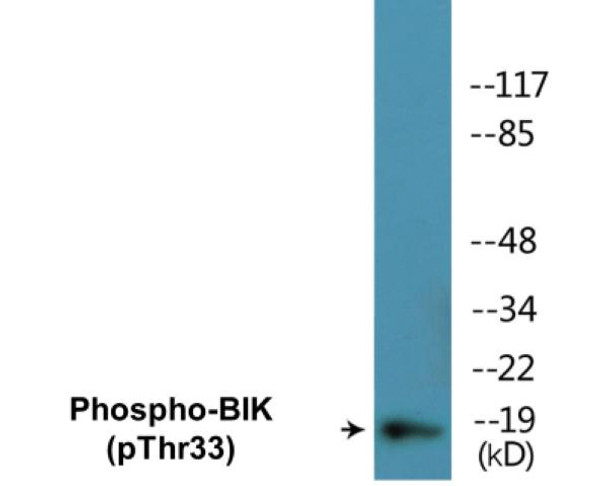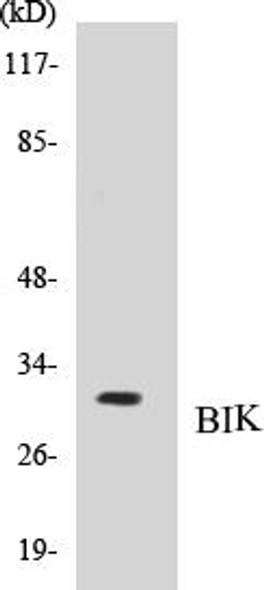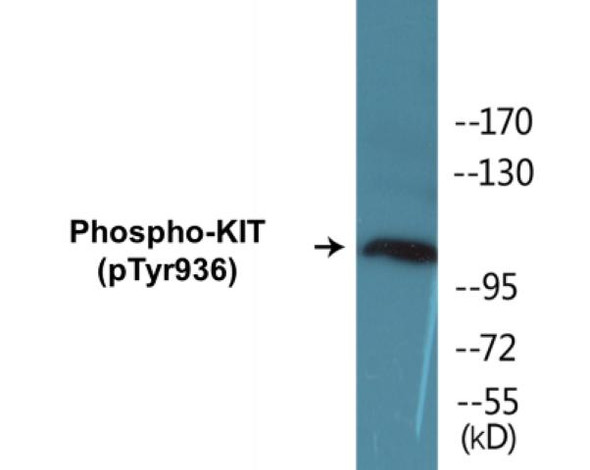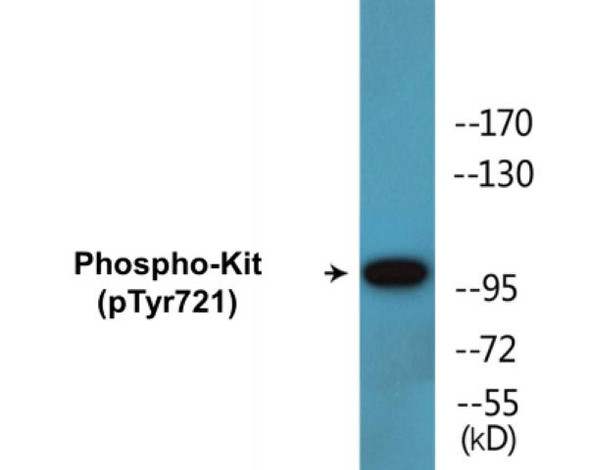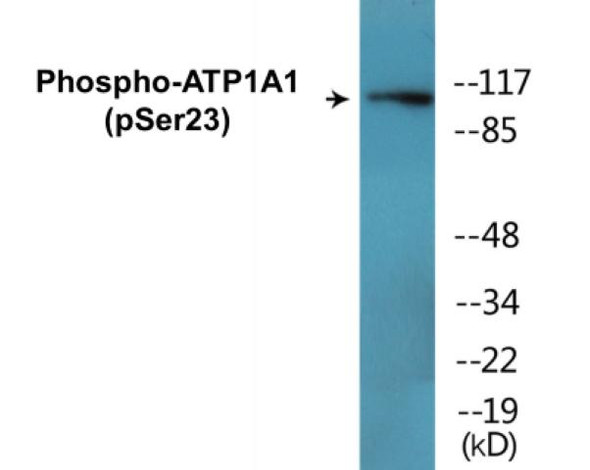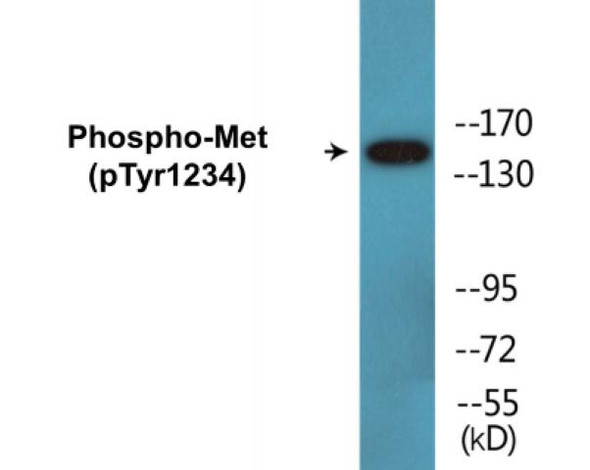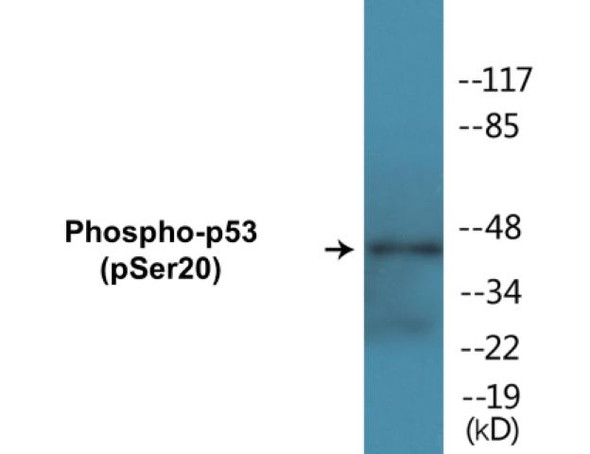BIK (Phospho-Thr33) Colorimetric Cell-Based ELISA Kit
- SKU:
- CBCAB01230
- Product Type:
- ELISA Kit
- ELISA Type:
- Cell Based Phospho Specific
- Research Area:
- Cell Death
- Reactivity:
- Human
- Detection Method:
- Colorimetric
Description
BIK (Phospho-Thr33)Colorimetric Cell-Based ELISA Kit
The BIk Phospho-Thr33 Colorimetric Cell-Based ELISA Kit is specifically designed for the accurate detection and quantification of BIk protein phosphorylated at Threonine 33 in cell lysates, tissue lysates, and other biological samples. This innovative kit offers high sensitivity and specificity, ensuring precise and reliable results for researchers studying the role of BIk phosphorylation in cell signaling pathways and cancer biology.BIk is a key player in regulating cell cycle progression and apoptosis, making it a valuable target for therapeutic interventions in cancer and other diseases.
By measuring BIk phosphorylation at Thr33, researchers can gain valuable insights into the mechanisms underlying cell survival and death, paving the way for the development of novel targeted therapies.Overall, the BIk Phospho-Thr33 Colorimetric Cell-Based ELISA Kit is a powerful tool for researchers seeking to unravel the complex signaling networks involved in cell fate decisions, and for advancing our understanding of cancer biology and therapeutic strategies.
| Product Name: | BIK (Phospho-Thr33) Colorimetric Cell-Based ELISA |
| Product Code: | CBCAB01230 |
| ELISA Type: | Cell-Based |
| Target: | BIK (Phospho-Thr33) |
| Reactivity: | Human |
| Dynamic Range: | > 5000 Cells |
| Detection Method: | Colorimetric 450 nm |
| Format: | 2 x 96-Well Microplates |
The BIK (Phospho-Thr33) Colorimetric Cell-Based ELISA Kit is a convenient, lysate-free, high throughput and sensitive assay kit that can detect BIK protein phosphorylation and expression profile in cells. The kit can be used for measuring the relative amounts of phosphorylated BIK in cultured cells as well as screening for the effects that various treatments, inhibitors (ie. siRNA or chemicals), or activators have on BIK phosphorylation.
Qualitative determination of BIK (Phospho-Thr33) concentration is achieved by an indirect ELISA format. In essence, BIK (Phospho-Thr33) is captured by BIK (Phospho-Thr33)-specific primary antibodies while the HRP-conjugated secondary antibodies bind the Fc region of the primary antibody. Through this binding, the HRP enzyme conjugated to the secondary antibody can catalyze a colorimetric reaction upon substrate addition. Due to the qualitative nature of the Cell-Based ELISA, multiple normalization methods are needed:
| 1. | A monoclonal antibody specific for human GAPDH is included to serve as an internal positive control in normalizing the target absorbance values. |
| 2. | Following the colorimetric measurement of HRP activity via substrate addition, the Crystal Violet whole-cell staining method may be used to determine cell density. After staining, the results can be analysed by normalizing the absorbance values to cell amounts, by which the plating difference can be adjusted. |
| Database Information: | Gene ID: 638, UniProt ID: Q13323, OMIM: 603392, Unigene: Hs.475055 |
| Gene Symbol: | BIK |
| Sub Type: | Phospho |
| UniProt Protein Function: | BIK: accelerates programmed cell death. Binding to the apoptosis repressors Bcl-xL, Bcl-2, or BHRF1 (the Epstein-Barr virus homolog of Bcl-2) suppresses its death-promoting activity. Contains 1 Bcl-2 homology 3 (BH3) domain. Does not interact with Bax. |
| UniProt Protein Details: | Protein type:Mitochondrial; Apoptosis; Membrane protein, integral Chromosomal Location of Human Ortholog: 22q13.31 Molecular Function:protein binding Biological Process: apoptosis; male gonad development; positive regulation of protein homooligomerization |
| NCBI Summary: | The protein encoded by this gene shares a critical BH3 domain with other death-promoting proteins, such as BID, BAK, BAD and BAX, that is required for its pro-apoptotic activity, and for interaction with anti-apoptotic members of the BCL2 family, and viral survival-promoting proteins. Since the activity of this protein is suppressed in the presence of survival-promoting proteins, it is suggested as a likely target for anti-apoptotic proteins. [provided by RefSeq, Sep 2011] |
| UniProt Code: | Q13323 |
| NCBI GenInfo Identifier: | 2493284 |
| NCBI Gene ID: | 638 |
| NCBI Accession: | Q13323.2 |
| UniProt Secondary Accession: | Q13323,Q16582, Q6FH93, |
| UniProt Related Accession: | Q13323 |
| Molecular Weight: | 18,016 Da |
| NCBI Full Name: | Bcl-2-interacting killer |
| NCBI Synonym Full Names: | BCL2 interacting killer |
| NCBI Official Symbol: | BIK |
| NCBI Official Synonym Symbols: | BP4; NBK; BIP1 |
| NCBI Protein Information: | bcl-2-interacting killer |
| UniProt Protein Name: | Bcl-2-interacting killer |
| UniProt Synonym Protein Names: | Apoptosis inducer NBK; BIP1; BP4 |
| Protein Family: | Bcl-2-interacting killer |
| UniProt Gene Name: | BIK |
| UniProt Entry Name: | BIK_HUMAN |
| Component | Quantity |
| 96-Well Cell Culture Clear-Bottom Microplate | 2 plates |
| 10X TBS | 24 mL |
| Quenching Buffer | 24 mL |
| Blocking Buffer | 50 mL |
| 15X Wash Buffer | 50 mL |
| Primary Antibody Diluent | 12 mL |
| 100x Anti-Phospho Target Antibody | 60 µL |
| 100x Anti-Target Antibody | 60 µL |
| Anti-GAPDH Antibody | 60 µL |
| HRP-Conjugated Anti-Rabbit IgG Antibody | 12 mL |
| HRP-Conjugated Anti-Mouse IgG Antibody | 12 mL |
| SDS Solution | 12 mL |
| Stop Solution | 24 mL |
| Ready-to-Use Substrate | 12 mL |
| Crystal Violet Solution | 12 mL |
| Adhesive Plate Seals | 2 seals |
The following materials and/or equipment are NOT provided in this kit but are necessary to successfully conduct the experiment:
- Microplate reader able to measure absorbance at 450 nm and/or 595 nm for Crystal Violet Cell Staining (Optional)
- Micropipettes with capability of measuring volumes ranging from 1 µL to 1 ml
- 37% formaldehyde (Sigma Cat# F-8775) or formaldehyde from other sources
- Squirt bottle, manifold dispenser, multichannel pipette reservoir or automated microplate washer
- Graph paper or computer software capable of generating or displaying logarithmic functions
- Absorbent papers or vacuum aspirator
- Test tubes or microfuge tubes capable of storing ≥1 ml
- Poly-L-Lysine (Sigma Cat# P4832 for suspension cells)
- Orbital shaker (optional)
- Deionized or sterile water
*Note: Protocols are specific to each batch/lot. For the correct instructions please follow the protocol included in your kit.
| Step | Procedure |
| 1. | Seed 200 µL of 20,000 adherent cells in culture medium in each well of a 96-well plate. The plates included in the kit are sterile and treated for cell culture. For suspension cells and loosely attached cells, coat the plates with 100 µL of 10 µg/ml Poly-L-Lysine (not included) to each well of a 96-well plate for 30 minutes at 37°C prior to adding cells. |
| 2. | Incubate the cells for overnight at 37°C, 5% CO2. |
| 3. | Treat the cells as desired. |
| 4. | Remove the cell culture medium and rinse with 200 µL of 1x TBS, twice. |
| 5. | Fix the cells by incubating with 100 µL of Fixing Solution for 20 minutes at room temperature. The 4% formaldehyde is used for adherent cells and 8% formaldehyde is used for suspension cells and loosely attached cells. |
| 6. | Remove the Fixing Solution and wash the plate 3 times with 200 µL 1x Wash Buffer for five minutes each time with gentle shaking on the orbital shaker. The plate can be stored at 4°C for a week. |
| 7. | Add 100 µL of Quenching Buffer and incubate for 20 minutes at room temperature. |
| 8. | Wash the plate 3 times with 1x Wash Buffer for 5 minutes each time. |
| 9. | Add 200 µL of Blocking Buffer and incubate for 1 hour at room temperature. |
| 10. | Wash 3 times with 200 µL of 1x Wash Buffer for 5 minutes each time. |
| 11. | Add 50 µL of 1x primary antibodies Anti-BIK (Phospho-Thr33) Antibody, Anti-BIK Antibody and/or Anti-GAPDH Antibody) to the corresponding wells, cover with Parafilm and incubate for 16 hours (overnight) at 4°C. If the target expression is known to be high, incubate for 2 hours at room temperature. |
| 12. | Wash 3 times with 200 µL of 1x Wash Buffer for 5 minutes each time. |
| 13. | Add 50 µL of 1x secondary antibodies (HRP-Conjugated AntiRabbit IgG Antibody or HRP-Conjugated Anti-Mouse IgG Antibody) to corresponding wells and incubate for 1.5 hours at room temperature. |
| 14. | Wash 3 times with 200 µL of 1x Wash Buffer for 5 minutes each time. |
| 15. | Add 50 µL of Ready-to-Use Substrate to each well and incubate for 30 minutes at room temperature in the dark. |
| 16. | Add 50 µL of Stop Solution to each well and read OD at 450 nm immediately using the microplate reader. |
(Additional Crystal Violet staining may be performed if desired – details of this may be found in the kit technical manual.)

